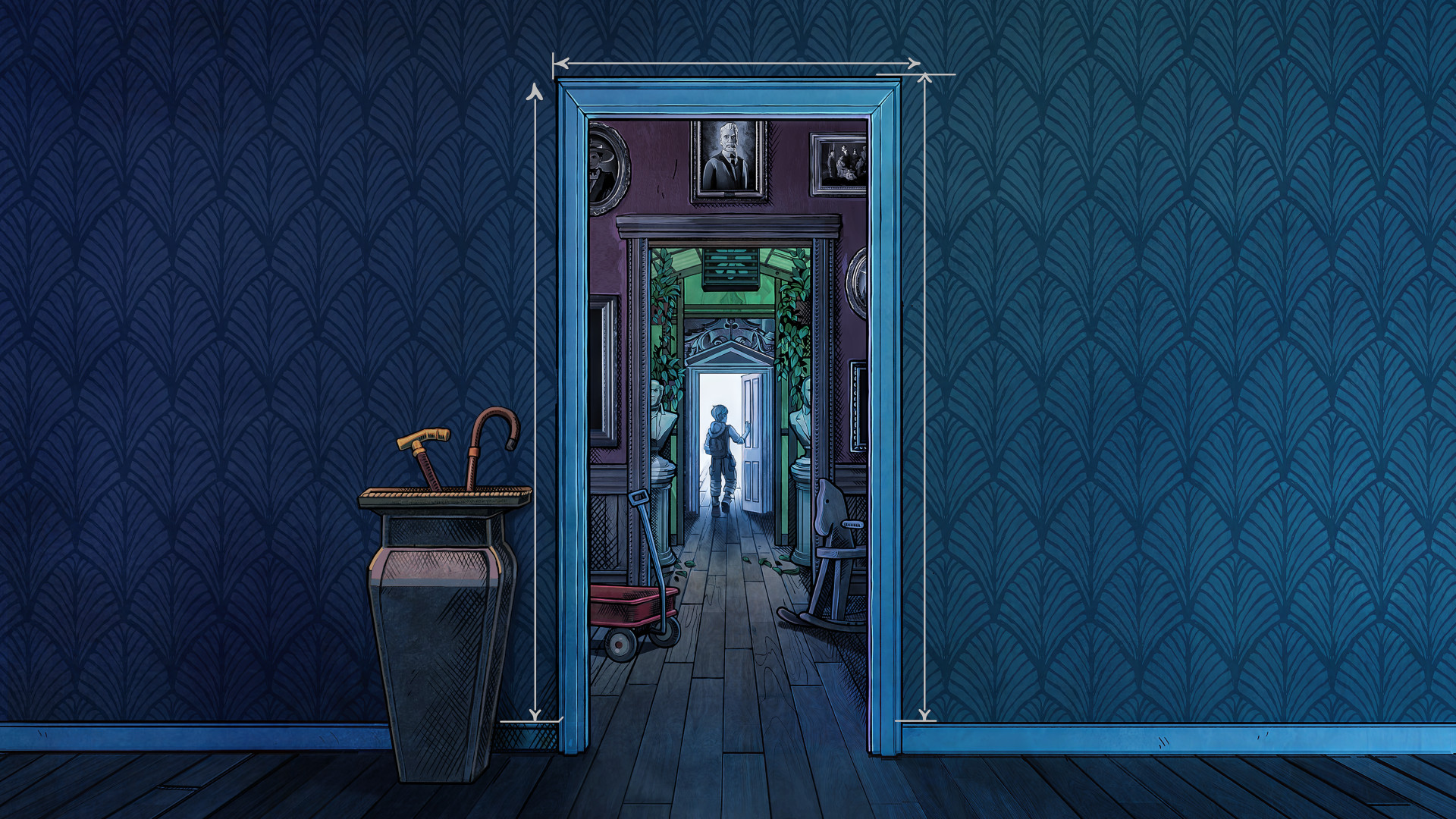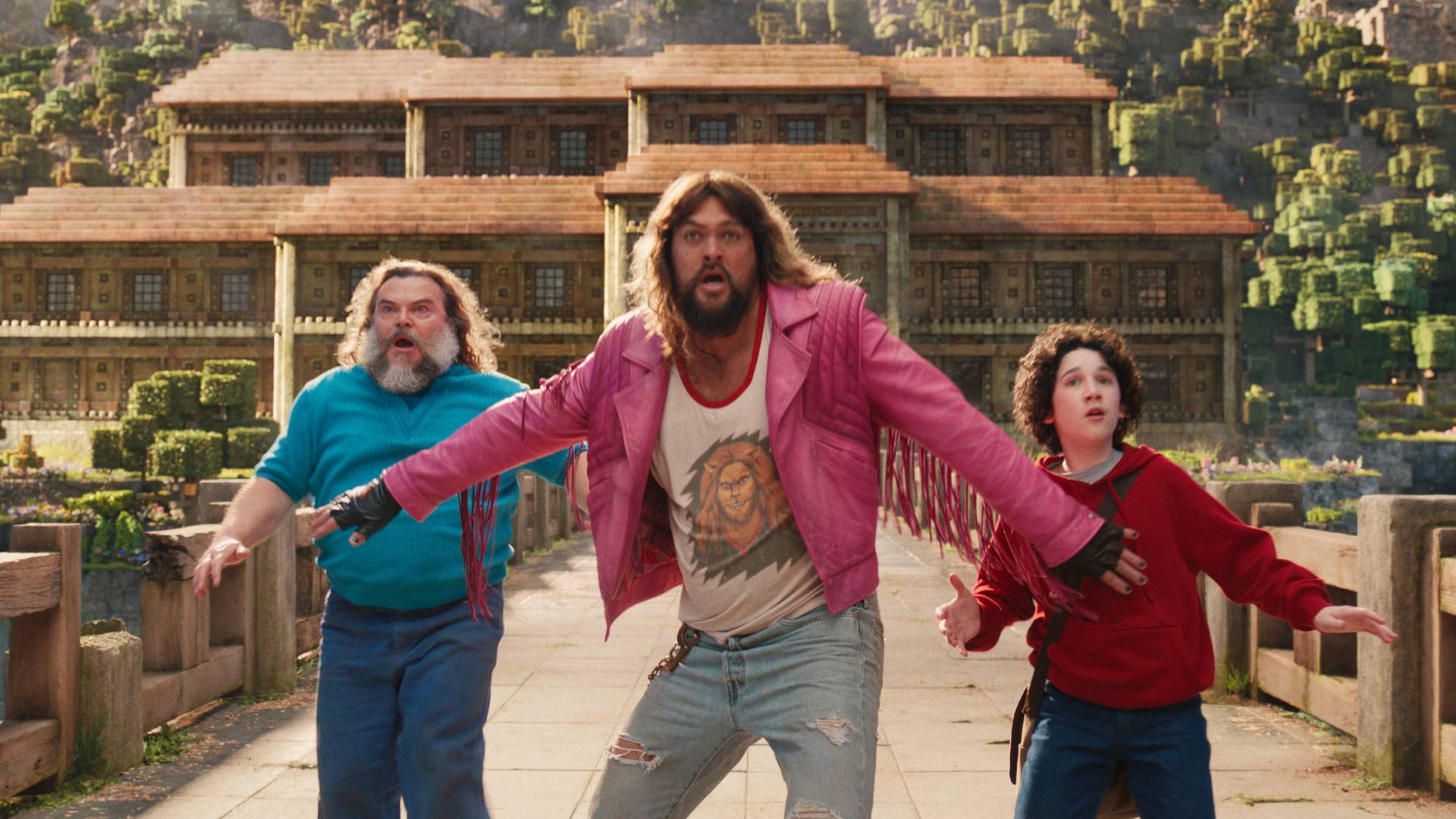Malediction is metal enough to make Elden Ring wince, and I can't wait to play this new wargame
"You don't need any [dice] rolls, just your strategy"
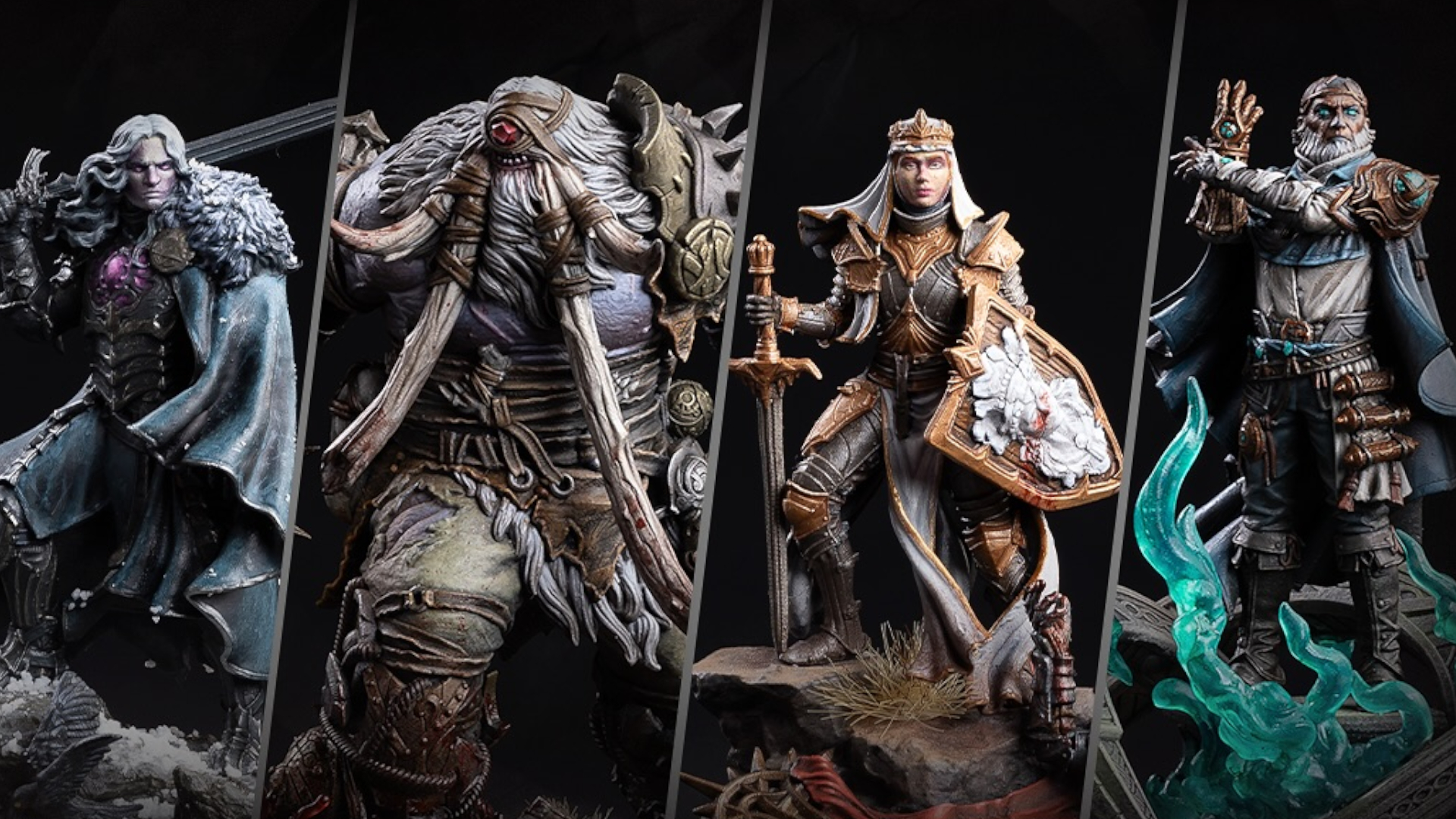
Malediction is OK being weird. Actually, that might be its greatest strength. Breaking into wargames is notoriously difficult thanks to a Space Marine-shaped shadow looming over the hobby, so standing out is a survival instinct.
Thanks to card-based gameplay drawn from the best board games, tokens that can be swapped out for 3D-printable miniatures, lore from multi-NYT bestselling author Tracy Hickman, and ever-shifting terrain, Brazilian developer Loot Studios is giving the effort both barrels. The community certainly seems to appreciate this USP; there's been enough buzz over Malediction to make it one of 2025's most talked-about releases so far.
To find out more, I knocked on the door of Loot Studios. After chatting with industry veteran and head of marketing Silvio Compagnoni, I understand the hype. Malediction needs to be on your radar if it wasn't already.
Shifting landscape
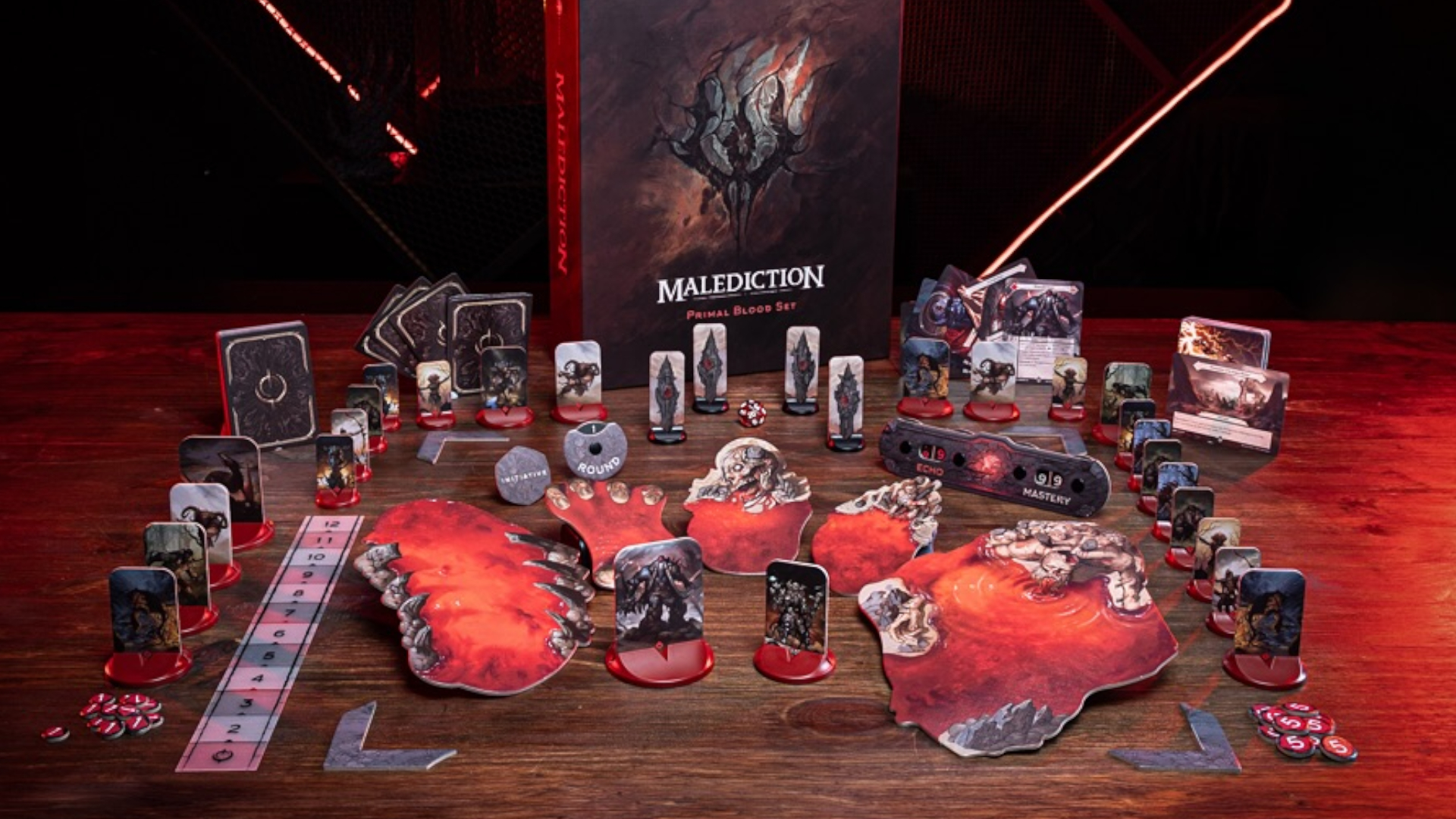
Much like Mutant Year Zero: Zone Wars and Godtear, Malediction wants to break down barriers. More specifically, Compagnoni tells me that the game keeps the randomization of dice rolls "to a minimum. You don't have to roll and do all that math. Either you hit hard or just give a minor hit, but you're always hitting… You don't need any rolls, just your strategy."
This is spiced with ability cards (which can cast creatures, spells and the like) that must be used at the right time for maximum effect. Because these cards have values that are also used for initiative, you've got to weigh up when you should use or bank them as well. When combined with the unique style of each faction, everyone will end up playing the same deck differently. As an example, Compagnoni tells me about a deck from the Primal Blood army that lets you summon totems to boost your warriors.
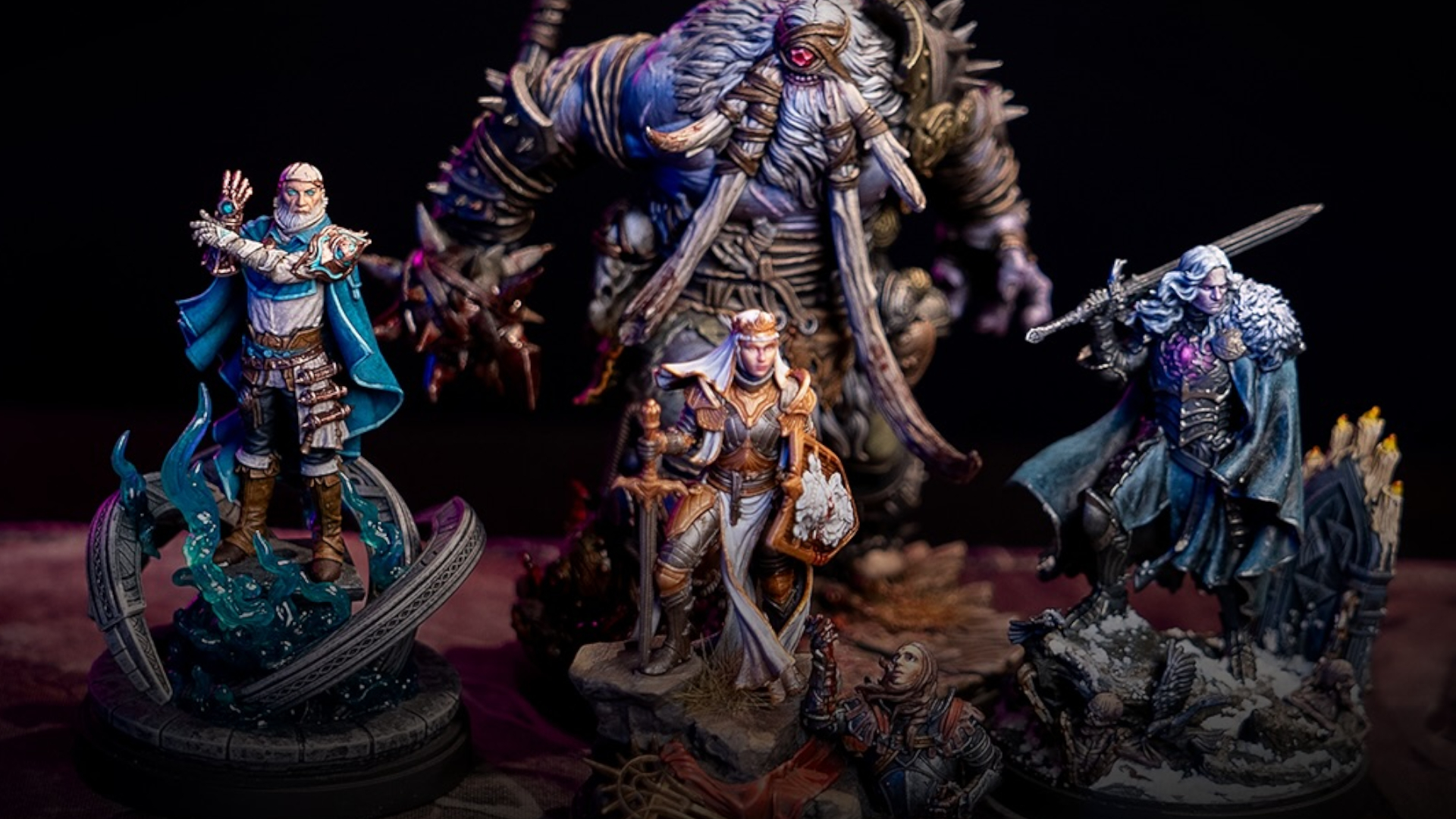
Malediction was fully funded in 12 minutes when it first appeared on Gamefound, and has racked up more than 860% of its target goal. It will be returning for late pledges on February 18, so you still have time to get the game's factions for less ahead of launch.
"There was a guy that was relying on that," he explains. "Every place he put one of the totems, they covered a whole line on the battlefield. So that whole line was boosted for the Primal Blood army. It was impossible for you to reach [them] unless you destroyed the totem. But if you destroy the totem, which is just standing there, doing nothing, the army is going to hit you, and hit you hard. So it was really fantastic. He discovered a way to play differently to the way we play here. This is the magic thing about the card game part of [Malediction]; you can create different strategies."
Another way Malediction stands apart is its terrain. Each faction has its own collection of scenery elements that interferes with the battle in some way, providing negative or positive effects depending on who lands there. Primal Blood terrain damages warriors when they step on it thanks to being lava-based, for instance, while the sorcerous Conclave of the Spheres has scenery that boosts your spellcasting. This stops armies from sniping in the corner or bulldozing over foes right away, providing an extra layer of strategy. Like Compagnoni says, "every time you're going to play the game, every time you decide where to put your terrain, it's a different gaming area with different things that are happening."
Sign up to the GamesRadar+ Newsletter
Weekly digests, tales from the communities you love, and more
Breaking boundaries
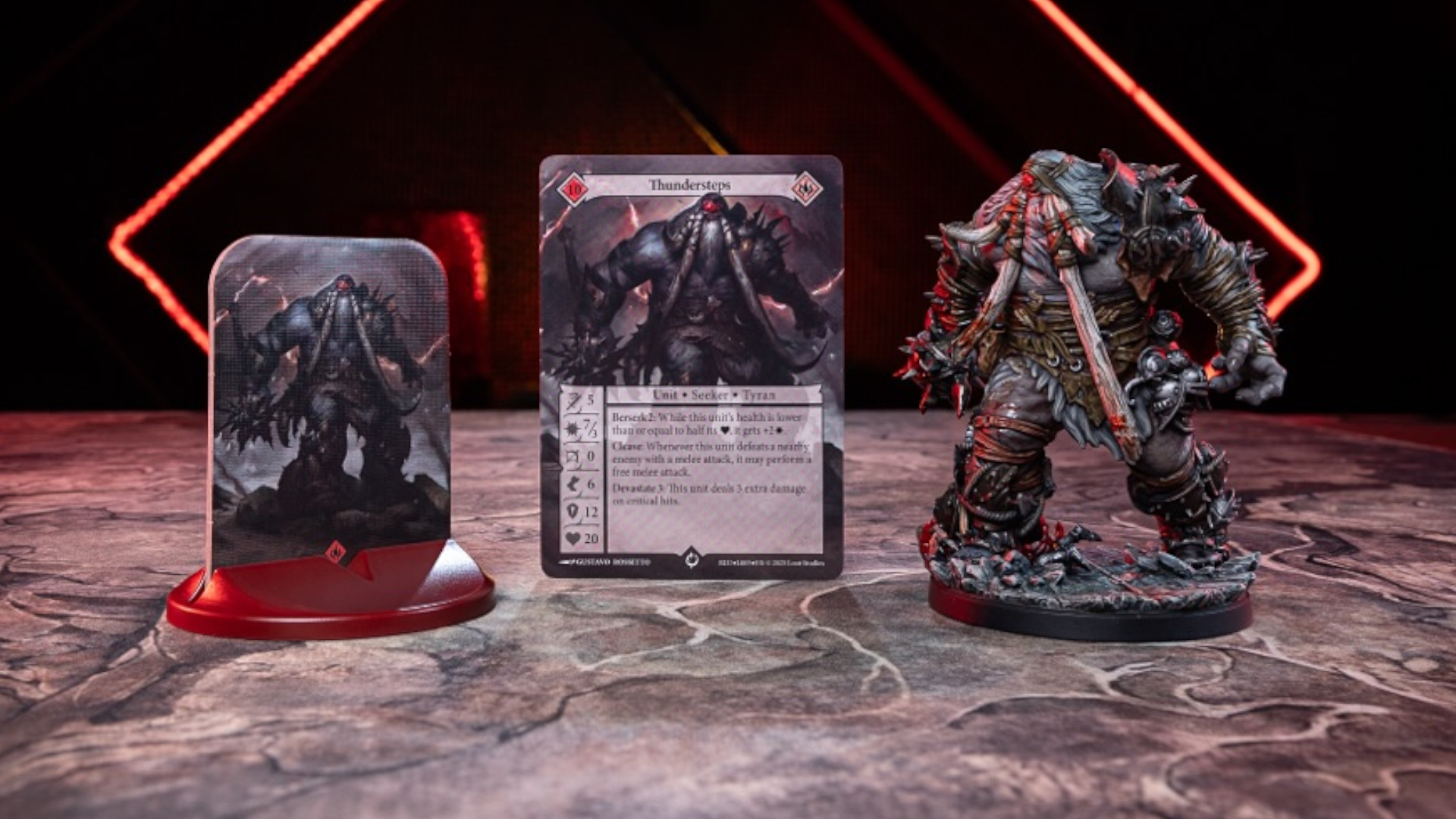
Built from the ground up by a team better known for its miniature subscription service (where it provides a collection of model files you can print at home each month with the best 3D printers), Malediction is Loot Studio's first game. As I talk to Compagnoni, he says that there was some trepidation about releasing the project – he describes it as sending your kid out into the world once they're all grown up.
However, they certainly have the street cred to pull this off. Besides being renowned miniature-makers (the company was founded by Alvaro Ribeiro, an experienced 3D artist who's worked on everything from official Witcher statues to Marvel collectibles), Loot has a very important ally in their corner: Tracy Hickman. As co-creator of the Dragonlance series and one of best D&D books, Ravenloft (which you might recognize in its remastered form, Curse of Strahd), Hickman is as close to fantasy royalty as you can get. Compagnoni describes working with him as a "no-brainer," and the author helped flesh out Malediction's background, lore, and characters into a grimdark world that's metal enough to make Elden Ring wince.
Still, it wasn't always like that.
"When we started the project, Malediction was something like high fantasy – an ordinary fantasy world [with] elves, trolls, orcs, dwarves, warriors, humans. And we noticed that that kind of approach limited the creativity of our artists," says Compagnoni, noting that classic tropes gave them self-imposed boundaries. "So we said, hey, the world, the lore of Malediction, says that the world's shattered, full of magic and chaos. So everything's either destroyed or cursed. There's no room for, you know, a nice chap. We said, let's [give] more freedom to our artists, both the 3D artists and illustrators, to make them able to show their visions of what would be a dark world of fantasy."
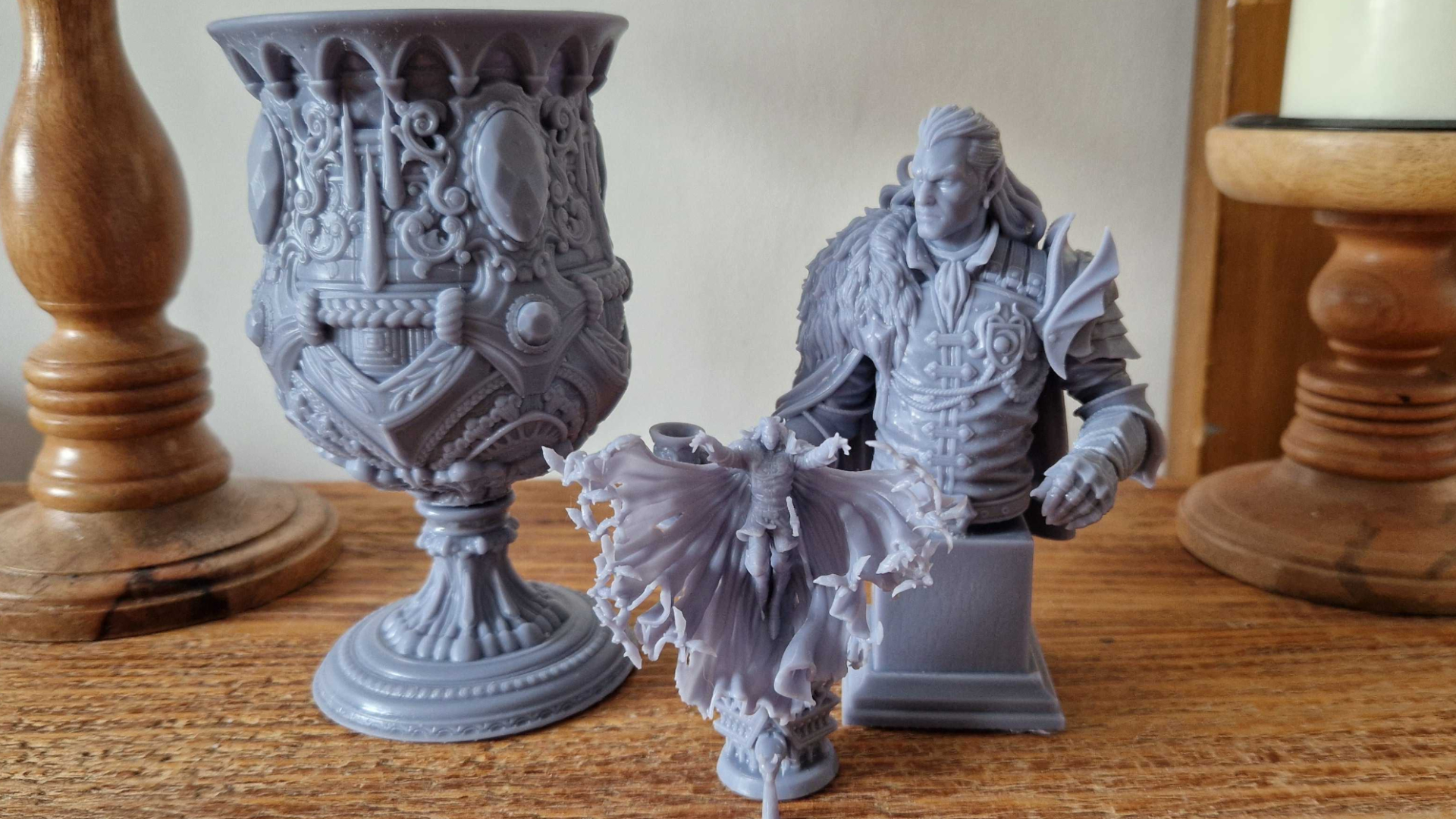
Loot Studios is best known for its subscription service that gets you a host of fantasy or sci-fi miniatures each month to use in everything from D&D to Warhammer.
The result is equal parts Diablo and Dark Souls. The four available factions are different flavors of dark fantasy, from worryingly overzealous holy warriors to undead hordes led by vampires. While Loot could have produced these as hard-plastic models packaged in each box, just like competitors do, this would result in its own limitations as far as detail and posing go. With that in mind, why not provide cardboard standees instead and offer codes for 3D-printable models that can be made at home? That way each Malediction box set costs far less than it otherwise would, and beginners can start playing right away without worrying about assembly. Plus, the designers don't have to worry about losing fidelity or curbing their ambitions; hard plastic limits what you can do with poses, whereas 3D-printed resin miniatures are far more accommodating. That's the reason for each faction including its own code to download the full army's 3D model roster, allowing you to print them – with multiple alternate poses – at home. "Loot's DNA is [3D printable]STL files," after all.
It's a unique approach that taps into the wild creativity already on display in the wargaming community, and I can see it being embraced by both gamers hoping to try something different and 3D printing fans looking for a new project.
Either way, Compagnoni and the team are just pleased with how readily tabletop players have embraced Malediction already.
"We're from Brazil, so we are not in the eye of the hurricane – we're not in England or the US where you have stores everywhere, people talking and breathing tabletop games and miniatures games," he says. "We're in a country that does not have a culture of playing board games, so… for us, it's almost a double victory. We made it."
Malediction returns to Gamefound for late pledges this February 18.
For recommendations on what you should play next, check out the best adult board games and the best cooperative board games.

I've been writing about games in one form or another since 2012, and now manage GamesRadar+'s tabletop gaming and toy coverage. You'll find my grubby paws on everything from board game reviews to the latest Lego news.
